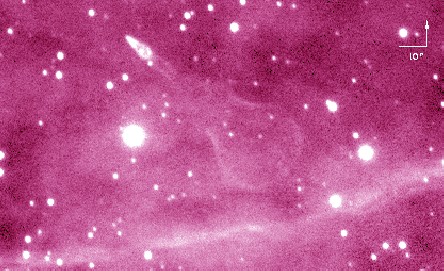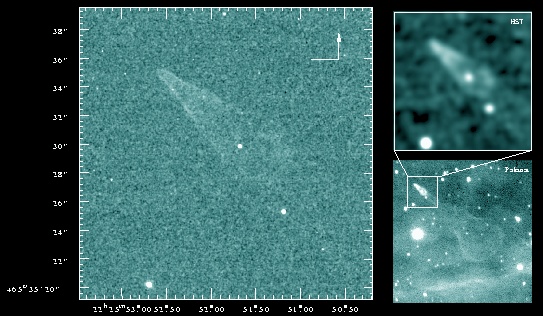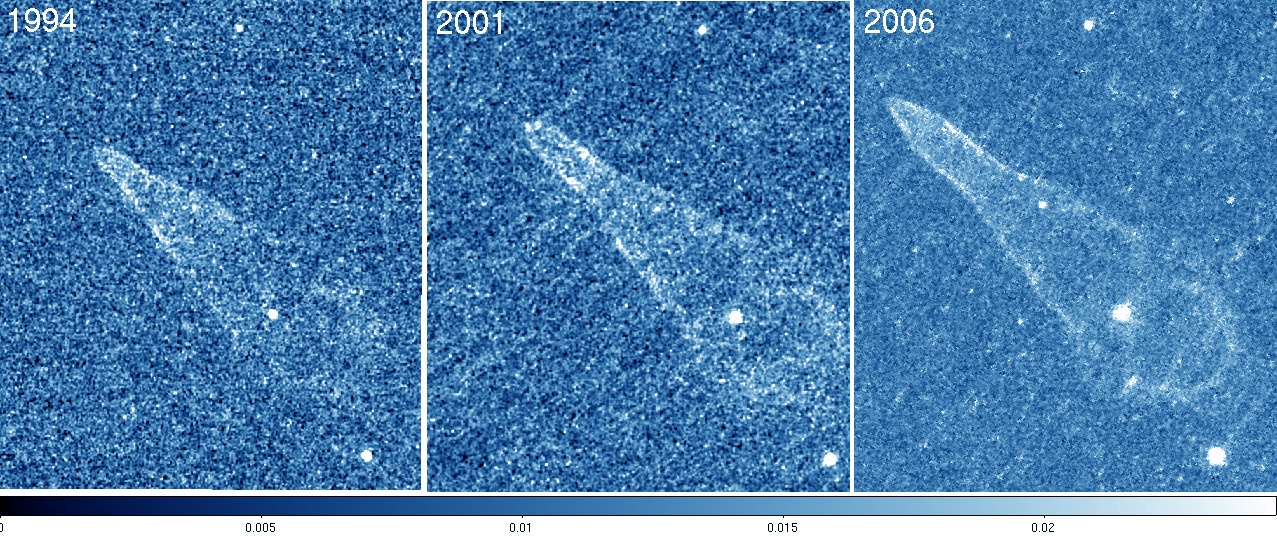
Bow shocks are observed on a wide variety of astrophysical scales, ranging from planetary magnetospheres to merging galaxy clusters. Some of the most spectacular bow shock nebulae are those associated with neutron stars: the Guitar Nebula is a visually striking example. It was discovered in 1992 (Cordes, Romani and Lundgren 1993, Nature, 362, 133) and has been observed regularly since then, both with the Hale Telescope at Palomar and with the Hubble Space Telescope.

The Guitar Nebula is produced by an otherwise ordinary neutron star, B2224+65, which is travelling at an extraordinarily high speed: about 1600 km/sec, or 1000 miles per second! The neutron star leaves behind a "wake" in the interstellar medium, which just happens to look like a guitar (only at this time, and from our point of view in space).
The Guitar Nebula is about 6.5 thousand light years away, in the constellation of Cepheus, and occupies about an arc-minute (0.015 degree) in the sky. This corresponds to about 300 years of travel for the neutron star.


|
Shami Chatterjee Contact Information Last modified: 08 March 2010. |